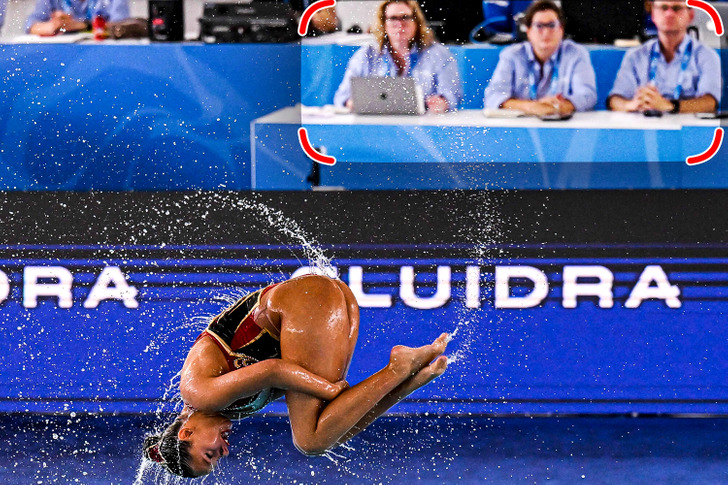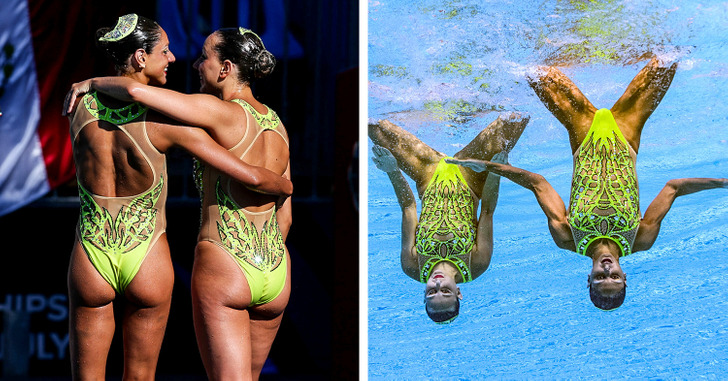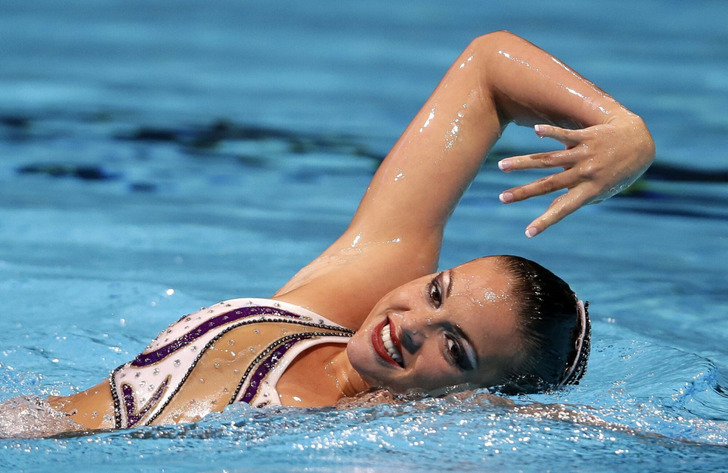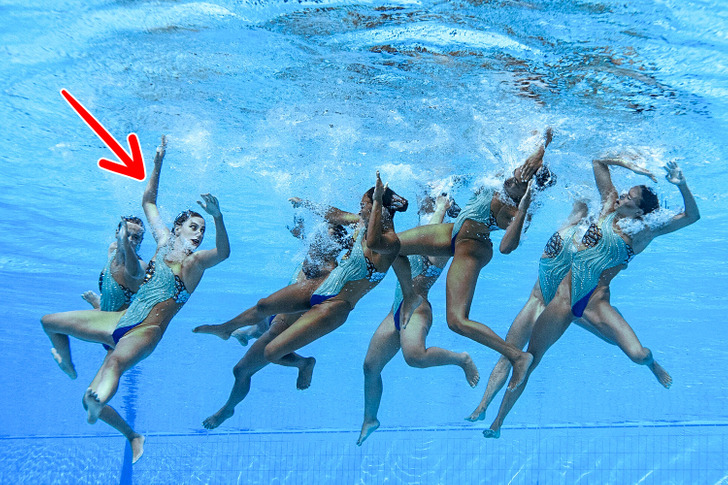20 Pics That Will Give You Happy Vibes

People who practice sports know that each discipline requires specific skills or equipment to train correctly, and artistic swimming is no exception. People who have seen these competitions are often amazed by the movements of the athletes jumping in and out of the water and their colorful swimsuits. But for all this to happen, athletes must do a lot behind the scenes, which truly makes this sport shine with its light.

In a competition of this discipline, you’ll find a jury composed of three panels, each with five judges. Each of these panels evaluates a different aspect of the routine. During practice, the first panel rates the execution, another the impression, and the third the elements used. On the other hand, in the free routines, one panel evaluates the performance, another the artistic image, and the third the difficulty.
Some of the teams in this sport have little money, so they cannot afford to hire a professional makeup artist for every competition. Therefore, the swimmers opt to create their makeup designs and apply them themselves.
Preparing for a competition is not cheap. Each swimmer uses, on average, one bottle of sunscreen per week and one new swimsuit per month. However, when it comes to makeup, it’s not out of vanity that these athletes wear about ten lipsticks throughout their careers. Like the makeup used on TV sets, it may look extreme up close, but it seems almost natural from a distance.
According to the basic principles of artistic swimming, each routine can last from two and a half to five minutes. This will depend on the number of people on the team competing. However, no matter how many athletes are in the water, they will be penalized if their routine lasts 15 seconds more or less than what it should.
Swimming, in general, is a sport known for improving the cardiovascular system of those who practice it, since it increases the use of oxygen in the body without causing excessive work to the heart. This leads to a 40% reduction in the risk of suffering from a myocardial disease.
Athletes may be required to pass a flexibility test before presenting their rehearsed routine in major competitions. Judges will add one point to the team’s final result for each team member who passes the test.

Artistic swimmers must be cautious with the swimsuits they choose for this sport: not only must they take into account the material it is made of, but also the design. Ideally, it should be a comfortable, light, and supportive swimsuit. Designs having an “X” in the back and high-cut legs are the most common because they allow greater freedom of movement.
Artistic swimming competitions can be very demanding, not only in terms of time or make-up, but also with the clothes they wear. In compulsory figure competitions, the winners must perform specific figures in front of a jury, which is in charge of evaluating the technique with which they do it. Therefore, to avoid distractions or for someone to stand out, wearing a black bathing suit without visible logos and a white bathing cap is mandatory.
Many of us might think these athletes can hold their breath underwater for a long time. However, even they do not know that to be true. This is because, while training or competing, they do not hold their breath while standing still, as they enter and exit the water every few seconds.

These accessories are used to prevent water from entering the nostrils of swimmers. And, despite being a bit uncomfortable, most athletes wear them. However, others have devised different ways to keep water out of their noses. For example, Mary Killman can cover her nostrils with her upper lip.

Although they are not allowed to wear goggles, they must keep their eyes open at all times, even when they are underwater. During a routine, they mustn’t lose sight of their partners so that, if necessary, they can correct their alignment or prepare specific movements.
During an interview, Olympic gold medalist Kelsi Worrell said, “Nothing is too embarrassing. We are so vulnerable with each other and so open that we are there to help each other.” For example, if someone has a tampon string in plain sight, the other teammates help by pointing it out.
What sports have you played, and what were their specificities? If you had the opportunity to practice any sport, which one would it be and why?











